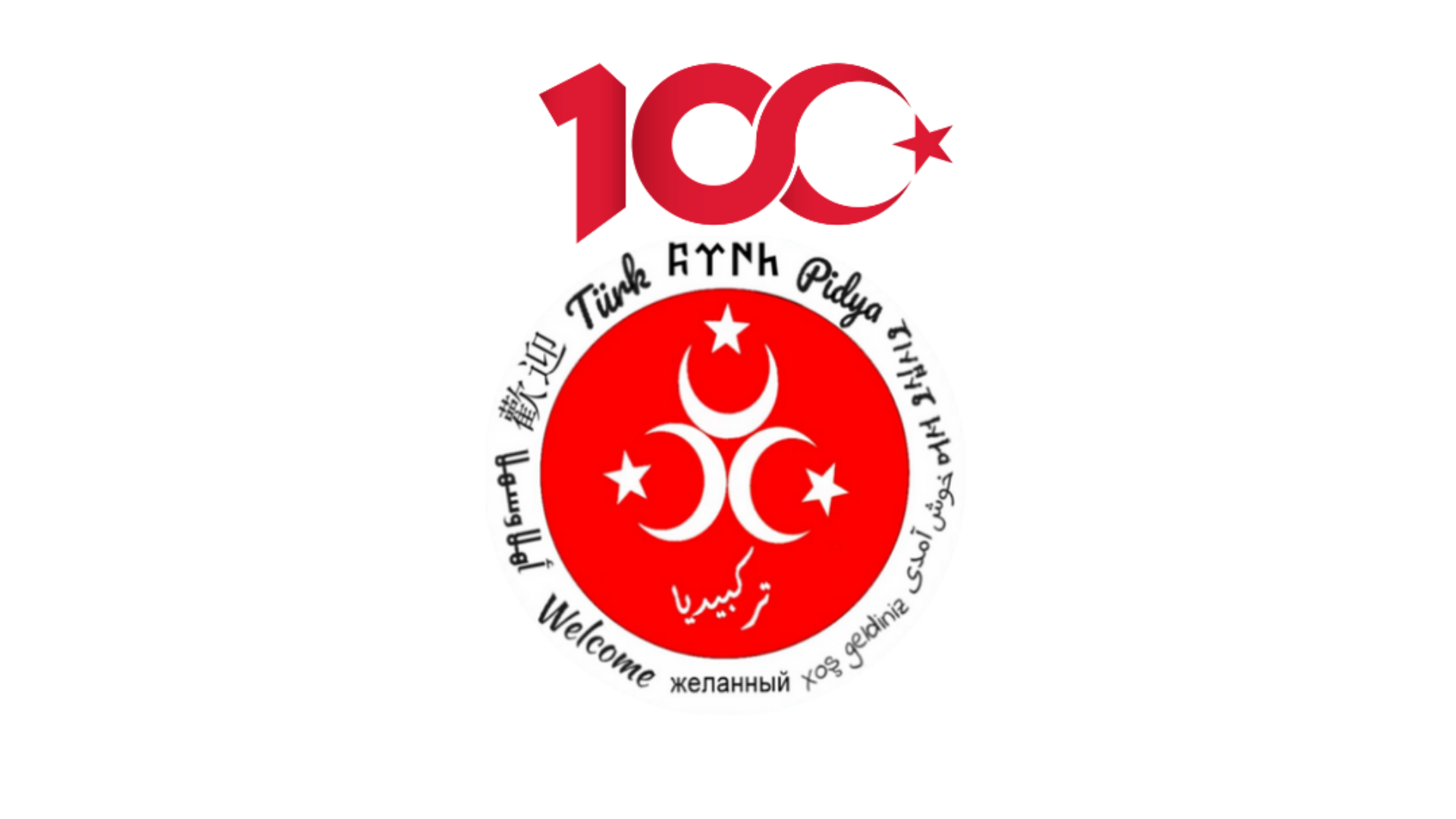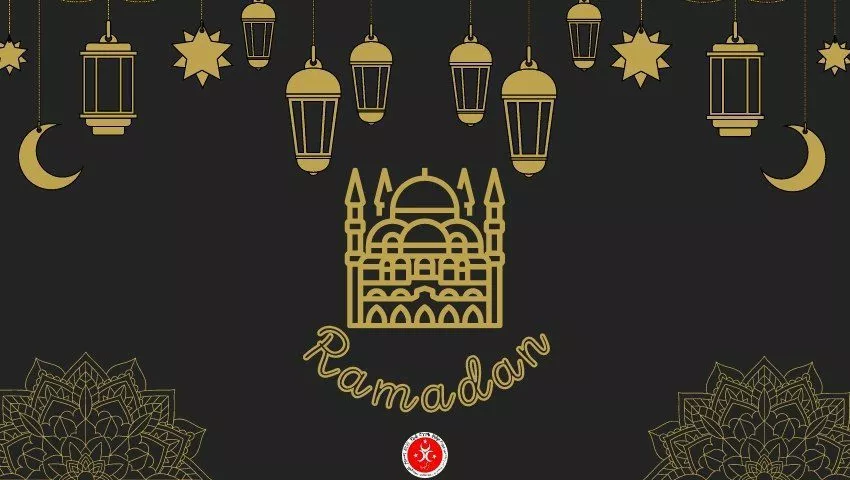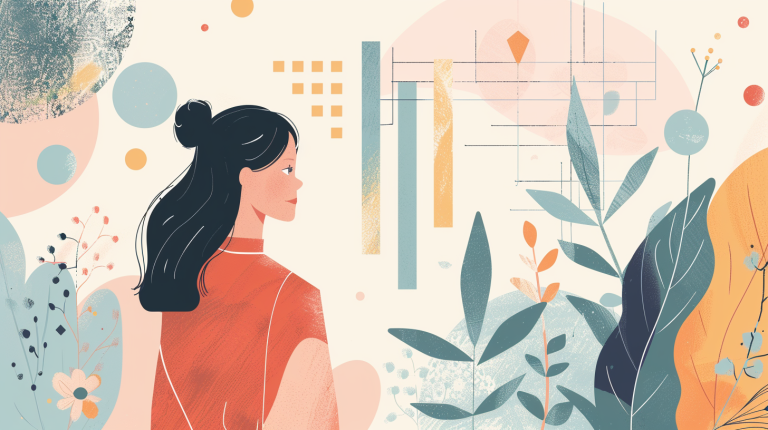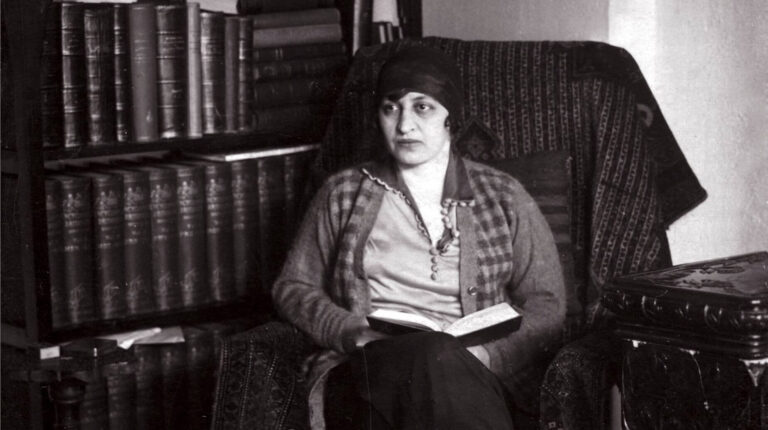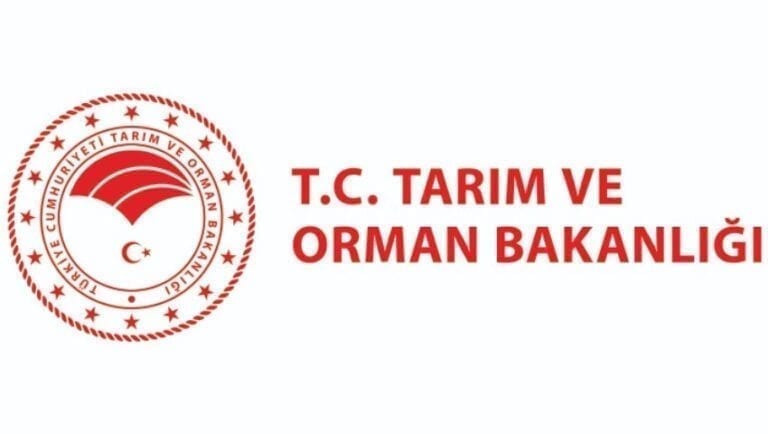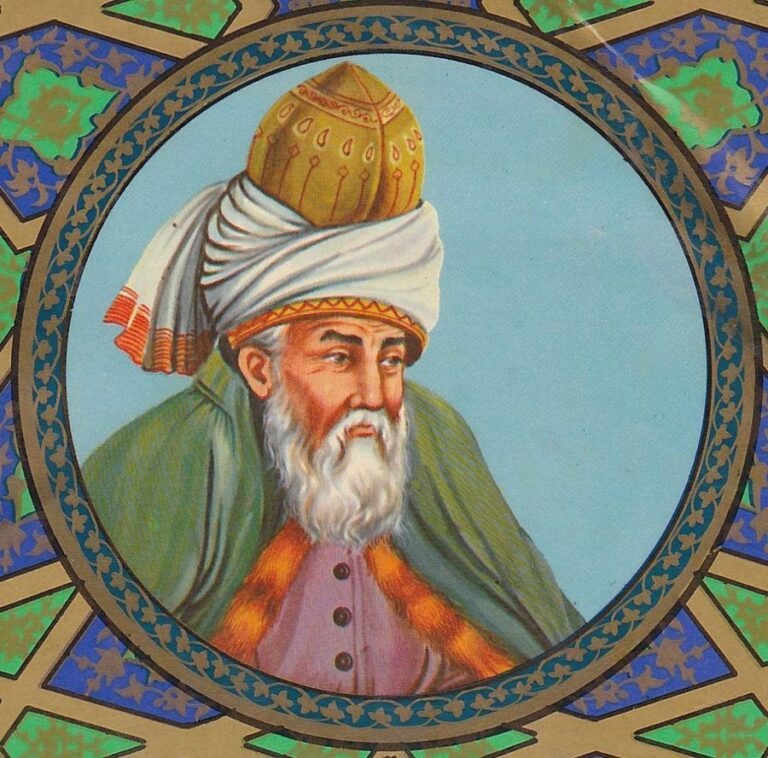Table of Contents
We will tell you everything you need to know about Ramadan in Turkey. History, traditions, activities.
Ramadan is the ninth month of the Islamic calendar. It is a month of fasting, prayer and reflection. Ramadan lasts for 29-30 days depending on the moon cycle. In 2024, Ramadan starts on March 11th and end on April 9th. During Ramadan, Muslims refrain from food, drink and other sensual pleasures from dawn to sunset.
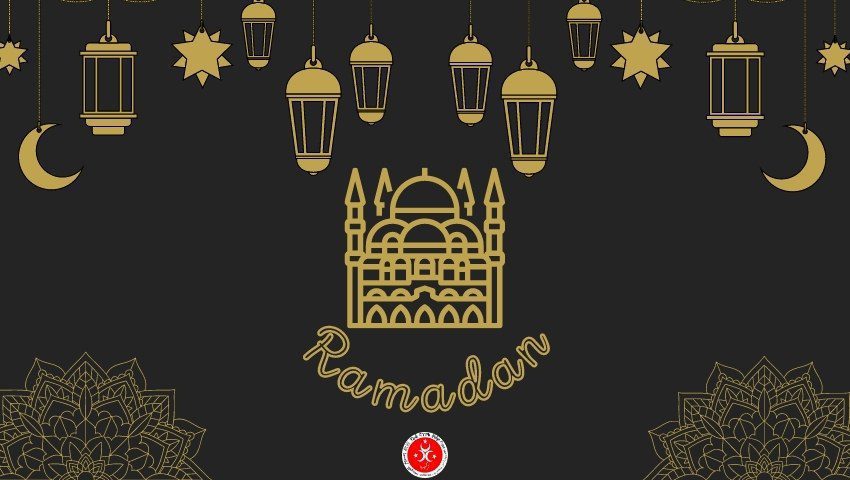
Importance of Ramadan in Turkey
As an expat living in Turkey, I have come to appreciate the significance and beauty of Ramadan in this predominantly Muslim country. Ramadan, known as “Ramazan” in Turkish, is a holy month of fasting, spiritual reflection, and community bonding.
During Ramazan, the streets come alive with a festive atmosphere, especially after sunset when the daily fast is broken. The moment of breaking the fast is called “iftar” in Turkish. Families and friends gather around tables filled with delicious traditional dishes like “pide” (a type of Turkish bread), “güllaç” (a sweet pastry dessert), and “şerbet” (a refreshing drink made from fruit or flower petals).
As the month comes to a close, preparations begin for the joyous celebration of “Ramazan Bayramı” or “Şeker Bayramı” (Sugar Feast), a three-day festival marking the end of Ramadan. During this time, people dress in their best clothes, visit family and friends, and exchange gifts, often including sweet treats like “baklava” and “lokum” (Turkish delight).
Experiencing Ramazan in Turkey has deepened my appreciation for the country’s rich cultural and religious traditions. It has taught me the value of community, compassion, and spiritual growth. As they say in Turkish, ” Hayırlı Ramazanlar!” which means “Happy Ramadans!”

Ramadan Preparations in Turkey
As Ramadan approaches, the preparations in Turkey begin to unfold, creating a vibrant and exciting atmosphere. Here are some notable aspects of Ramadan preparations in Turkey:
- Stocking up on essentials: Families start preparing for the month by stocking up on staple foods like rice, flour, dates, and other ingredients needed for traditional Ramdan dishes. Grocery stores and markets become bustling hubs of activity.
- Preparing special dishes: Turkish cuisine comes alive during Ramazan, with households preparing a variety of delicacies. Women often gather to make “güllaç,” a sweet and creamy dessert made with thin layers of cornstarch, milk, and rose water. Other popular dishes include “pide,” a soft and fluffy bread, and “mercimek çorbası,” a hearty lentil soup.
- Decorating homes and streets: Streets and homes are adorned with colorful lights, lanterns, and “mahya,” which are illuminated messages strung between the minarets of mosques. These decorations create a festive and warm ambiance throughout the month.
- Preparing for iftar gatherings: Families and friends plan iftar gatherings in advance, deciding on menus and organizing seating arrangements. It’s common for people to host or attend multiple iftar meals throughout the month, strengthening social bonds and fostering a sense of community.
- Charitable activities: Ramazan is a time of heightened generosity and compassion. Many people participate in charitable activities, such as donating food packages to those in need or volunteering at local organizations. “Sadaka” (voluntary charity) is an important aspect of Ramadan in Turkey.
- Spiritual preparation: Alongside material preparations, people also focus on spiritual readiness. They may spend more time reading the Quran, attending religious lectures, or engaging in personal reflection and prayer. Mosques become lively centers of worship, especially during the special “teravih” prayers held each night.

Traditions at Ramadan in Turkey
Hanging Ridges on Mosques (Mahya)
One of the most enchanting traditions during Ramadan in Turkey is the hanging of illuminated ridges, known as “mahya,” between the minarets of mosques. This practice dates back to the Ottoman Empire and has become an integral part of the Ramazan experience in Turkey.
What are Mahya?
- Mahya are large, illuminated messages or designs created by stringing lights between the minarets of mosques.
- These messages often consist of religious phrases, Quranic verses, or well-wishes related to Ramadan.
- The lights used for mahya are typically arranged in a specific pattern or calligraphy style, creating a visually stunning display.
The Process of Hanging Mahya:
- The installation of mahya is a meticulous process that requires skill and precision.
- Specialized craftsmen, known as “mahyacı,” are responsible for designing and setting up the mahya.
- They carefully climb the minarets and string the lights between them, ensuring that the message is clearly visible and aesthetically pleasing.
The Significance of Mahya:
- Mahya serve as a way to convey religious messages and create a spiritual atmosphere during Ramadan.
- They act as reminders of the importance of faith, unity, and compassion during this holy month.
- The illuminated messages also add to the festive and celebratory mood of Ramazan, creating a sense of joy and togetherness among the community.
Viewing Mahya:
- People often gather in the vicinity of mosques to admire the mahya displays, especially after the evening prayers.
- The sight of the illuminated messages against the night sky creates a magical and awe-inspiring ambiance.
- Mahya become a focal point of attention and a source of pride for the local community.
The tradition of hanging mahya during Ramadan is a beautiful example of how art, religion, and community come together in Turkey. These illuminated ridges not only add to the visual splendor of the month but also serve as powerful reminders of the spiritual significance of Ramazan.
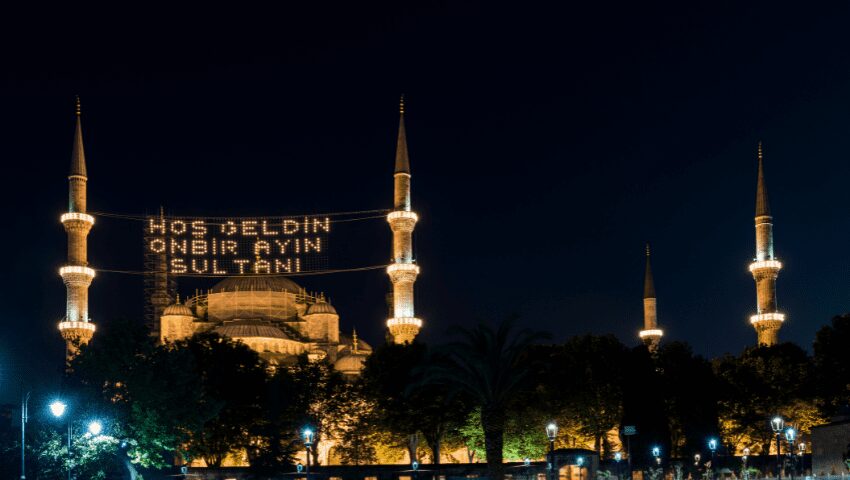
Ramadan Drummers
Ramadan drummers, known as “davulcu” in Turkish, are an integral part of the Ramadan traditions in Turkey. This unique custom adds to the festive and cheerful atmosphere of the holy month.
The Role of Ramadan Drummers:
- Ramadan drummers have the important task of waking people up for “sahur,” the pre-dawn meal before the daily fast begins.
- They walk through the streets of neighborhoods, beating their drums and singing special Ramadan songs called “mani.”
- The sound of the drum and the melodic chants serve as a reminder for people to rise and prepare for the day of fasting ahead.
The Tradition’s Origins:
- The tradition of Ramadan drummers dates back to the Ottoman Empire and is deeply rooted in Turkish culture and Islamic practices.
- In the past, Ramadan drummers would often be accompanied by a small group of people, and they would take turns singing the Ramadan mani.
- Today, the tradition has evolved, and Ramadan drummers usually travel alone, but their presence remains an essential part of the Ramadan experience.
The Ramadan Mani:
- Ramadan mani are short, rhyming poems or songs that Ramadan drummers sing while beating their drums.
- These mani often convey messages of blessings, well-wishes, and the importance of generosity and compassion during Ramadan.
- The lyrics of the mani may vary from region to region, but they all aim to spread joy and remind people of the spiritual significance of the month.
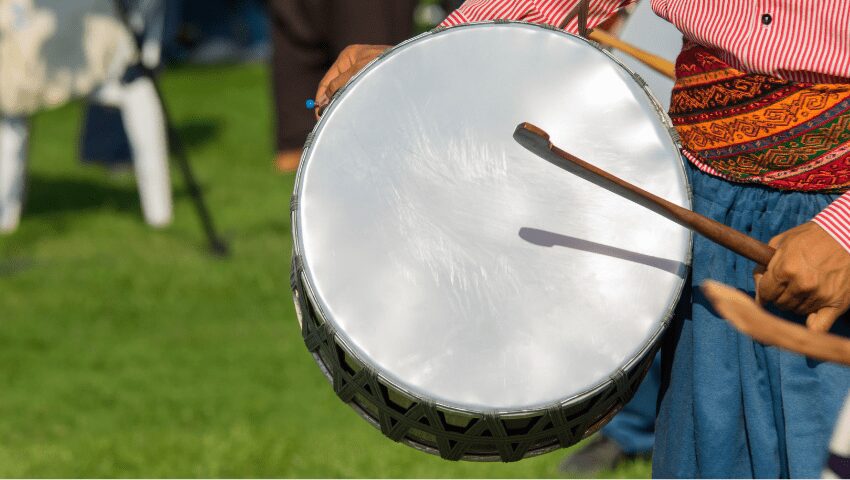
Mani Examples
Example 1:
Turkish:
“Denizden çek oltanı!
Duvara as baltanı!
Hoş geldi sefa geldi,
On bir ayın sultanı.”
English translation:
“Pull your fishing rod from the sea!
Hang your axe on the wall!
Welcome, glad tidings,
The sultan of eleven months has arrived.”
Explanation:
This mani welcomes the arrival of Ramadan, which is referred to as the “sultan of eleven months. On bir ayın sultanı” It encourages people to set aside their daily tasks (represented by the fishing rod and the axe) and embrace the blessings and spiritual focus of the holy month.
Example 2:
Turkish:
“Pideden sonra hemen uykuya dalma
Sahur duası etmeyi unutma
İftar kaçta diye şimdiden sorma
Sabırsız olup orucunu bozma”
English translation:
“Don’t fall asleep right after eating pide
Don’t forget to pray the sahur prayer
Don’t ask what time iftar is yet
Don’t break your fast impatiently”
Explanation:
This mani offers advice and reminders for those observing the Ramadan fast. It encourages people to stay awake after eating the pre-dawn meal (pide) and to remember to pray the sahur prayer. It also advises against constantly asking about the time of iftar (the evening meal to break the fast) and emphasizes the importance of patience and perseverance throughout the fasting day.
Ramadan Entertainments in Turkey
Ramadan entertainments in Turkey are an integral part of the festive atmosphere that follows the daily fasting. After breaking the fast with delicious meals and completing the tarawih prayers, people engage in various enjoyable activities that last until sahur.
One popular gathering spot is the coffeehouses located under the mosques, where people come together to sip foamy Turkish coffee and engage in lively conversations. This social environment, which begins with iftar among family and friends, continues late into the night.
Children eagerly anticipate the Karagöz-Hacivat plays, traditional shadow puppet performances that bring joy and laughter to the streets. These plays are a beloved part of Ramadan entertainment in Turkey.
Even for those who prefer to stay at home, Ramadan nights offer a special opportunity for people to gather and listen to captivating stories narrated by the elders. This tradition strengthens family bonds and passes down cultural heritage.
As Eid-al-Fitr approaches, preparations for the festive meals begin. Neighbors and relatives come together to prepare delicacies like baklava (a sweet pastry) and sarma (stuffed grape leaves). These shared cooking experiences enhance the sense of community and celebration.
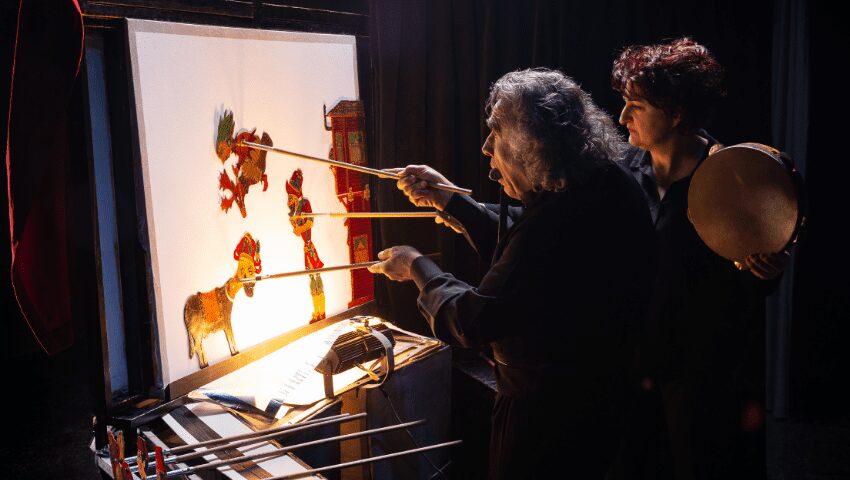
Teeth Rent tradition
The tooth renting tradition, known as “diş kirası” in Turkish, is a fascinating custom that originated during the Ottoman Empire and is still practiced by some families during Ramadan in Turkey.
The Origin of Tooth Renting:
- The tradition of tooth renting dates back to the Ottoman period, when members of the ruling establishment would attend iftar dinners hosted by wealthy individuals or high-ranking officials.
- After the meal, the host would bid farewell to the guests by saying, “You have been my guest, you have tired your teeth by eating the food I served, so this is your tooth rent.”
- This phrase acknowledges the effort put into consuming the food and expresses gratitude for the guests’ presence.
The Symbolism of Tooth Renting:
- The concept of tooth renting is a symbolic gesture that recognizes the guests’ participation in the iftar meal and the host’s appreciation for their company.
- It is a way of showing respect and gratitude towards the guests for honoring the host’s invitation and sharing a meal together.
- The phrase “tooth rent” is a metaphorical expression that highlights the idea that the guests have put in effort to eat the food prepared by the host.
Fairs and Festivities
In the past, events such as festivals and fairs were held in Ramadan. This tradition is still alive in some cities and regions today. The squares were turned into fairs, and various entertainments were held until the tarawih prayer was over. Even though the tradition of watching Karagöz and Hacivat plays is about to be forgotten nowadays, this tradition is continued with various activities.
Iftar Tent
The large tent set up for Muslims to break their fast during the month of Ramadan is known as an iftar tent. They are located at strategic points throughout the cities. Municipalities, associations, foundations, and philanthropists cover the costs of iftar tents.
In the tent, free food is served. Thousands of people eat the same meal to break their fast. People feel a sense of belonging and equality as a result of this.
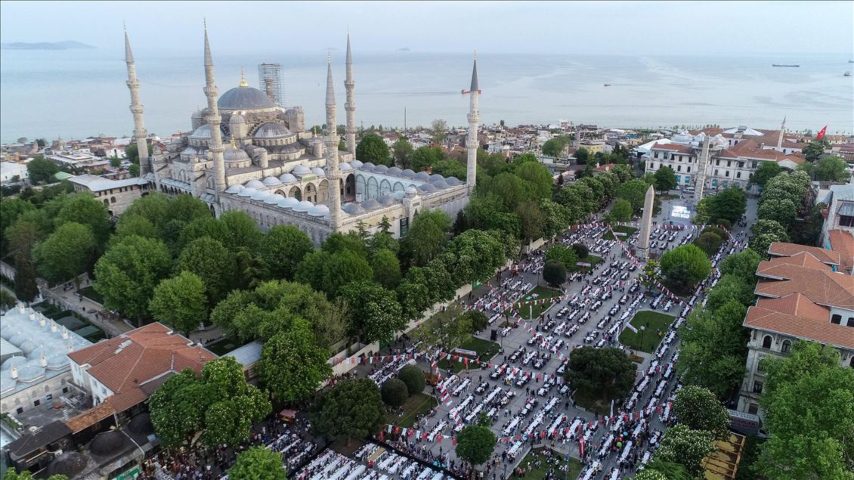
Ramadan in Turkey for Children
Children enjoy various activities during this holy month of fasting, like games, drawing competitions, and storytelling sessions.

How do Childrent Fast at Ramadan in Turkey
Ramadan is a special time for children in Turkey, as they eagerly participate in the traditions and festivities of the holy month. One such tradition is the “Tekne Orucu” (Tekne Fast), which allows children to experience the joy of fasting without compromising their health.
What is Tekne Orucu?
- Tekne Orucu is a centuries-old tradition that aims to instill the spirit of Ramadan in children.
- The word “tekne” comes from the Arabic word “تنمية” (tanmiyah), which means “development.”
- This fasting method is suitable not only for children but also for the elderly and those with health issues who may find it challenging to fast for long hours.
How Tekne Orucu Works:
- During Tekne Orucu, children and the elderly are allowed to consume food and water at noon.
- This helps them avoid potential health problems that may arise from prolonged fasting.
- Despite eating at noon, they still participate in the Ramadan spirit by joining their families for sahur (pre-dawn meal) and iftar (evening meal to break the fast).
- Consuming food at noon during Tekne Orucu does not invalidate the fast.
The Significance of Tekne Orucu:
- Tekne Orucu is an excellent way for young children to experience the excitement and joy of Ramadan alongside their families.
- It allows them to be part of the Ramadan traditions without putting their health at risk.
- By participating in sahur and iftar, children learn the importance of family bonding and shared experiences during the holy month.
- Tekne Orucu helps keep the Ramadan spirit alive and fosters a sense of unity and togetherness within the family and community.
Gifts for Children Fasting for the First Time
The first fasts of children, who are considered to be religiously sane, that is, who have taken their first step into puberty, are met with great interest.
Children who will fast for the first time are given special gifts and shared at iftar.These gifts, which encourage and support children in fasting, are a very effective way to explain the importance of Ramadan.Thus, children can become more attached to this culture and worship.
In the choice of gifts, the meals or snacks that they crave during the fast are usually effective.
Special Foods for Ramadan in Turkey
Ramadan Pide
Pide is one of the most delicious foods that remind us of the month of Ramadan. Although it is produced in bakeries and patisseries every month of the year, people enrich their tables with warm pides instead of bread in Ramadan.
This flavor, which has survived from the past to the present, is evident with the long line of people who wants to buy pide that close to the time of iftar.
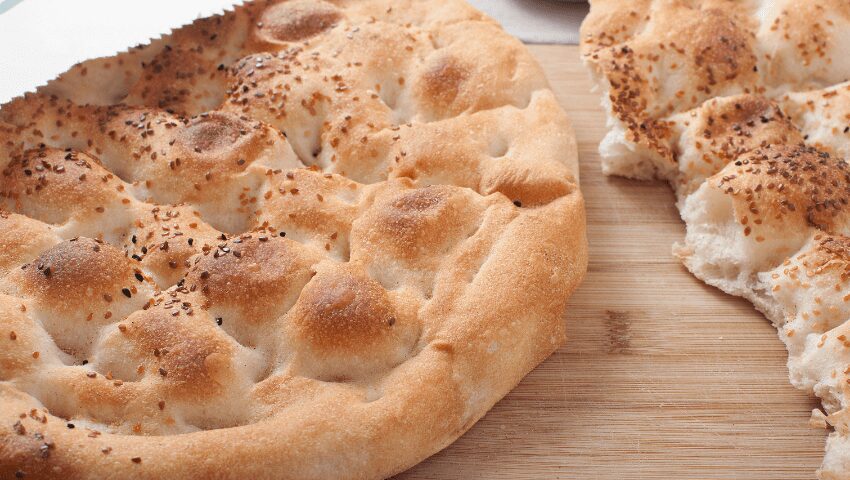
Güllaç
One of the things that reminds us that the month of Ramadan has arrived is the Güllaç that takes its place in the windows of bakeries and patisseries.
Güllaç is a sweet dessert made with milk and low in sugar. Pistachio, pomegranate and seasonal fruits are decorated on it. With this wonderful flavor that sweetens the Ramadan tables, it can be understood more clearly that Ramadan has arrived.
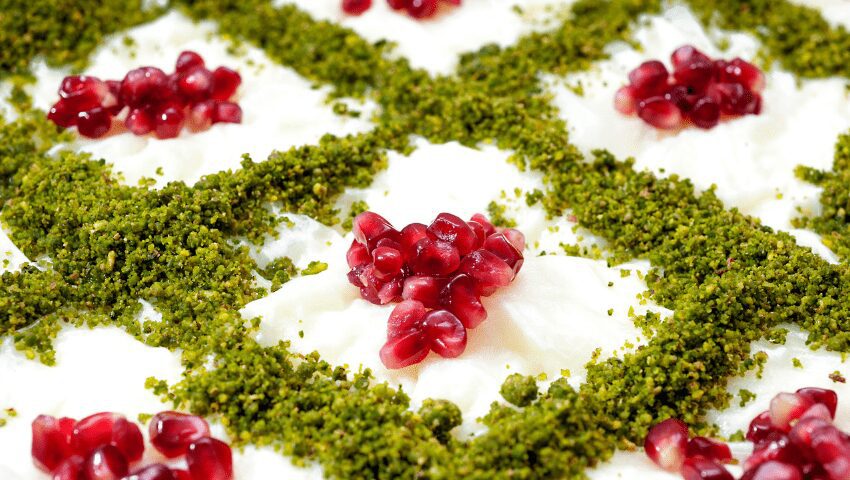
Iftar With Olives and Dates
Having iftar with olives and dates is one of the oldest Ramadan traditions. This tradition continues today and is among the must-haves at Ramadan tables. The history of all these Ramadan traditions, which continue today, actually goes back to the beginning of Islam.
Where to Visit at Ramadan in Istanbul?
Many important Islamic structures can be found in Istanbul. In this case, we’ve compiled a list of the most popular places to visit in Istanbul during Ramadan.
Sultanahmet Blue Mosque
The Blue Mosque, with its six minarets, is one of the most visited mosques, and it does not deviate from this tradition during Ramadan.
This mosque, built at the request of Sultan Ahmet I by Mehmet Aa, is an architectural treasure adorned with Iznik tiles.
Visitors to the Blue Mosque, which is one of the most important parts of the view of Sultanahmet Square, can attend the massive iftar tent in this square and partake in iftar with the crowd.
Furthermore, in the following hours, you may have the opportunity to perform the tarawih prayer with the congregation.
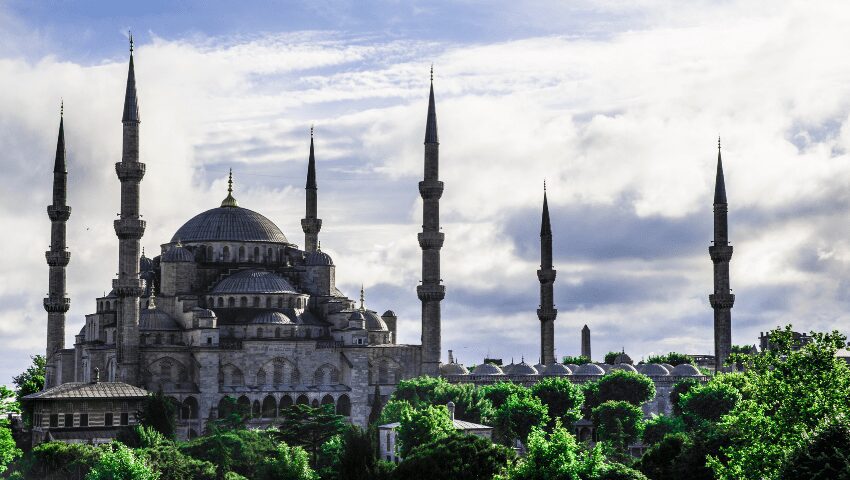
What is the Best Way to Get to the Blue Mosque?
The Blue Mosque is a 5-minute walk from Sultanahmet Station on the T1 line, which runs along the Baclar-Kabataş route.
Suleymaniye Mosque
The Suleymaniye Mosque, which was built at the request of Suleiman the Magnificent by Mimar Sinan when he was 85 years old, and which he later described as “my journeyman’s work,” is of great importance as one of the buildings that best reflect Ottoman architecture.
When viewed from above, this mosque, which also has a complex with additional services such as a madrasah, bath, and library, provides an incredible visual feast.
Mimar Sinan meticulously calculated every detail in the mosque, which is the result of his incredible intelligence.
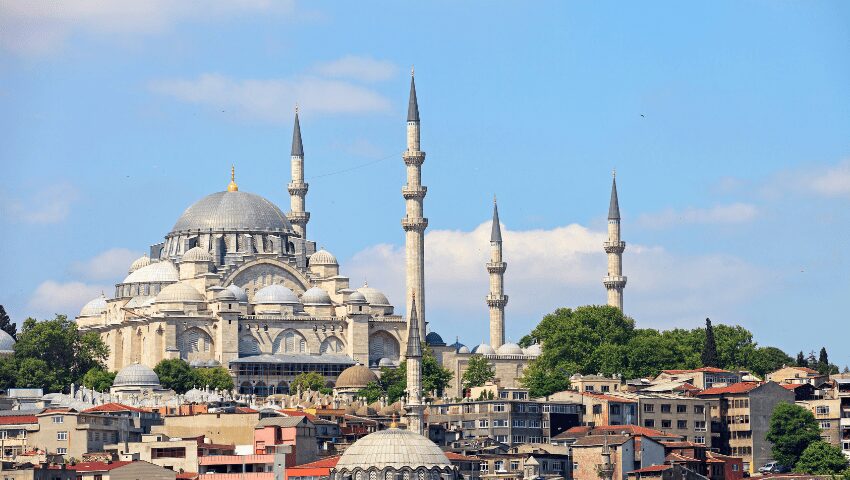
How to Get Suleymaniye Mosque?
The M2 Metro line can take you to the Suleymaniye Mosque, which is close to the Tombs of Suleiman the Magnificent and Hurrem Sultan.
Eyup Sultan Mosque and Tomb
Hz. Eyüp Sultan built the Eyüp Sultan Mosque in 1459 and the Eyüp Sultan Tomb in the same garden. It belonged to Abu Ayyub El-Ansari, who distinguished himself by his ability to host Muhammad.
The Eyüp Sultan Tomb, which is frequently visited, especially during Ramadan, is of particular significance because it is overflowing during morning prayers.
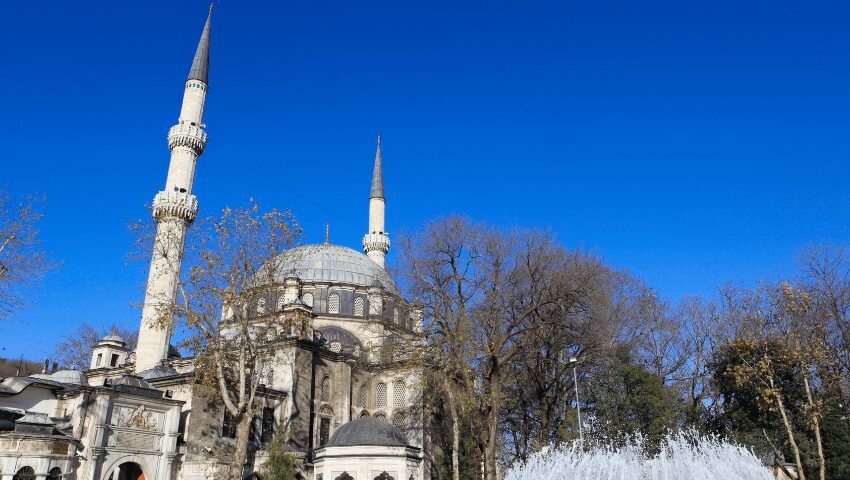
How to Get Eyup Sultan Mosque?
Buses departing on the Eyüp route can take you to these two holy buildings, which are located on the Golden Horn side and stand out with a plane tree that has been in its garden for centuries and a fountain whose water is considered sacred.
During the month of Ramadan, the mosque and tomb, which are cleaned with rose water every day, welcome visitors at all hours of the day.
